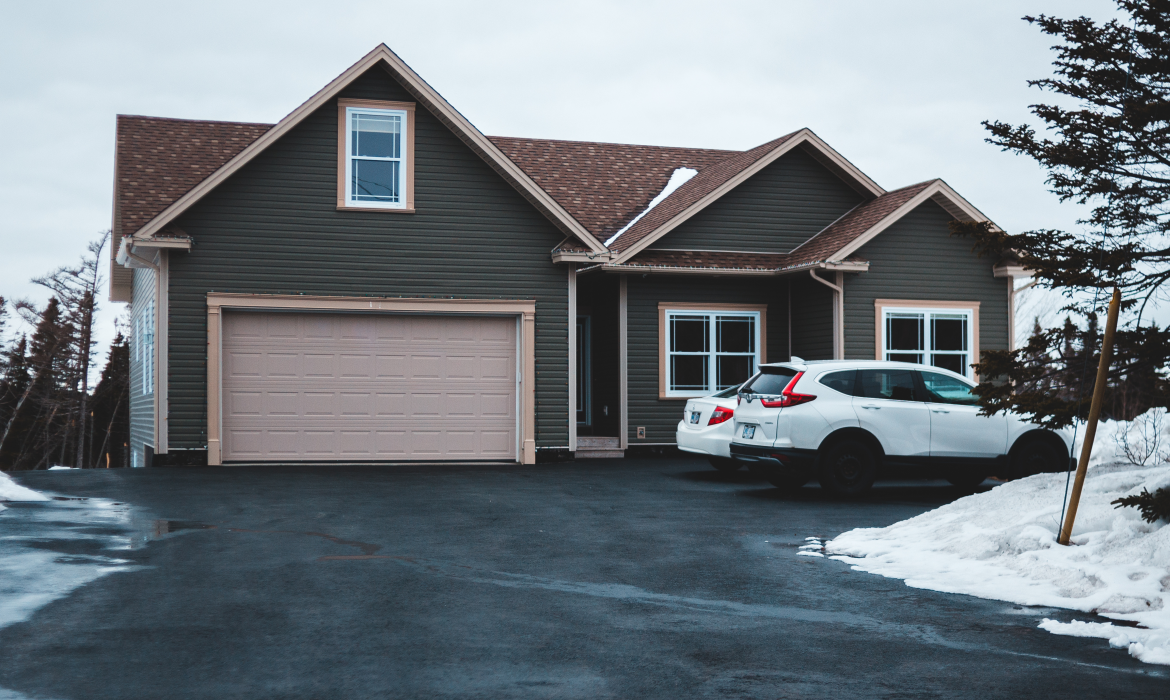A new asphalt driveway will go a long way in changing the way your home looks, providing curb appeal and utility. Nevertheless, it should be taken care of and maintained to make sure that it will be in good condition and will last many years. Sealing is one of the significant components of the maintenance of an asphalt driveway. When is it time to seal a new asphalt driveway? In this guide, we will discuss when to seal a new driveway, the advantages of sealing and the procedure of the process.
When is the Best Time to Seal a New Asphalt Driveway?
Seal a new asphalt driveway at the appropriate time in order to achieve the finest outcomes. If a driveway is sealed too early, this might be a problem, and if it is sealed too late, the driveway might become ruined.
These are some of the main factors to take into consideration:
Wait for Proper Curing
Curing is the most significant aspect to note when sealing a new asphalt driveway. New asphalt should be allowed to cure and harden before it can be sealed. When you seal the driveway prematurely, the sealer will not be able to adhere to the asphalt well, and it may make the surface peel or crack.
Curing Time: New asphalt normally takes approximately 30 days to cure. In the process, the asphalt must dry up and harden. The curing process enables the oils and solvents in the asphalt to evaporate and this is essential in ensuring that the sealer sticks well.
Signs the Asphalt is Ready: A simple test can be done to determine whether your asphalt is ready to be sealed. Take a little water and sprinkle it on the surface. When the water forms beads and is not absorbed into the ground, the asphalt is not ready to seal. In case the water drains into the surface, the asphalt is prepared to be sealed.
Optimal Temperature of Sealing
Sealing your new asphalt driveway is also a factor to consider regarding the weather condition. The temperature ought to be warm enough to enable the sealer to dry and cure effectively.
Best Temperature Range: The recommended temperature to apply an asphalt sealer is between 50 o F and 85 o F (10 o C and 30 o C). When the temperature is too hot, then the sealer may not dry well and when the temperature is too low, then the sealer may dry up too fast and not bond well with the surface.
Avoid Extreme Weather: You also need to avoid sealing your driveway in rainy weather or in case there is rain in the next 24 hours. When the sealer is not dry yet and the driveway is wet, then this may interfere with the overall finish.
Seal Every 2-3 years
Although, after a new asphalt driveway, you have to wait 30 days before sealing, it is necessary to keep the seal by resealing it after every 2 to 3 years. The sealer will wear out over time due to traffic, weather and sunlight. The protective layer can be preserved with regular resealing, and the driveway will remain attractive.
Resealing: It is time to reseal when the sealer is starting to fade or wear off. Normally, you are expected to reseal your driveway after every 2-3 years depending on the climatic conditions and the traffic that it experiences.
Sealing a New Asphalt Driveway
After your asphalt driveway has been cured completely and it is the right time, you can start with the sealing process.
These are the procedures of sealing a new asphalt driveway:
Wash the Driveway
The driveway must be cleaned properly before the application of the sealer to eliminate dirt, debris, oil marks, and any other form of contaminant. With the use of a broom or leaf blower, sweep off the loose debris. To remove more stubborn stains, you might have to apply a driveway cleaner or degreaser.
Pressure Washing: In case of need, wash the surface with a pressure washer to clean the surface to the full. Wait until the driveway is dry then proceed to the next step.
Seal All Cracks or Holes
Should your new asphalt driveway have any cracks or potholes, fix them prior to sealing. Small cracks should be filled with an asphalt crack filler and large holes with cold-patch asphalt. These cracks will be filled to avoid further damages and have a smooth and even surface during sealing.
Mix the Sealer
After cleaning and drying the driveway, it is time to put the sealer. Mix the sealer well until it attains a consistent consistency. The majority of driveway sealers are available in big containers, and they need to be mixed thoroughly before use.
Use Sealer
Apply the sealer using a squeegee or roller in long even strokes. Begin at one end of the driveway and walk to the other end so that you do not have to tread on the newly sealed surface. Make sure you use the sealer in thin coats to prevent pooling.
Application Tips: Use the sealer in sections ensuring that each stroke overlaps. Do small sections so that the sealer does not dry up before you can smooth it out.
Let the Sealer Dry
Once the sealer has been applied leave it to dry at least 24 hours before using the driveway. It is advisable not to drive or walk on the driveway during this period so as to allow the sealer to dry. You might have to increase the drying time when the temperature is either too hot or too cold.
Final Touches
Once the sealer dries, examine the driveway and see whether it requires touch-ups. Use the second coat when required especially where the sealer might not have adhered well. Wait till the second coat is dry to drive on the driveway.

